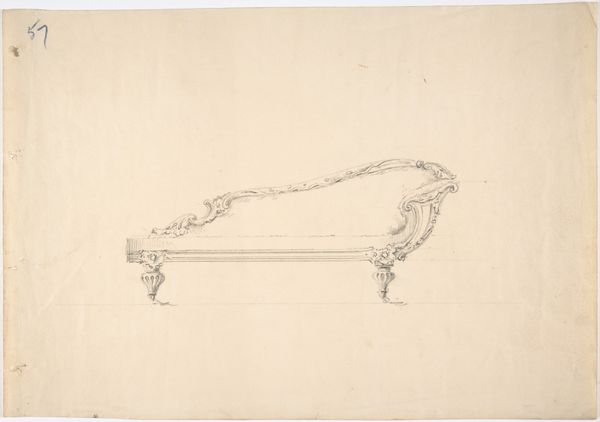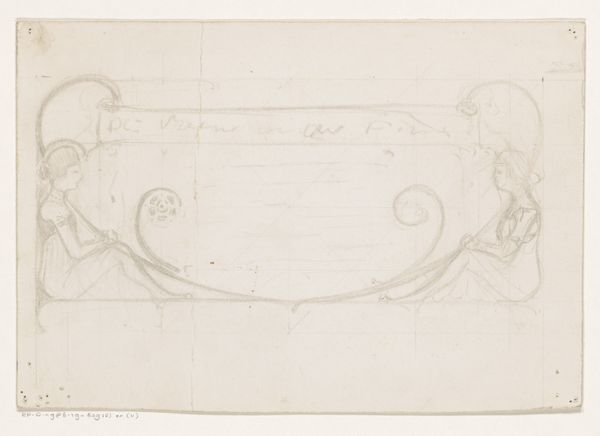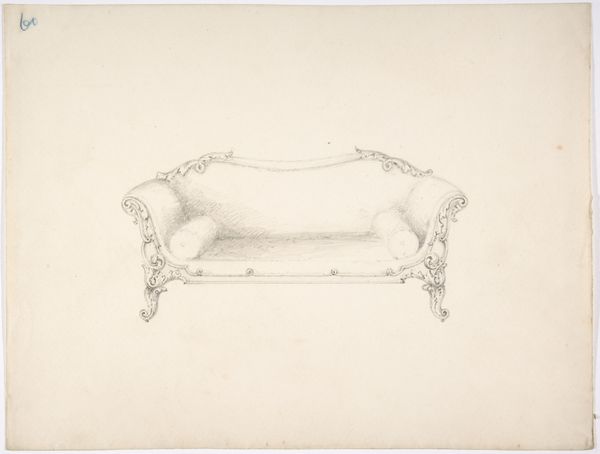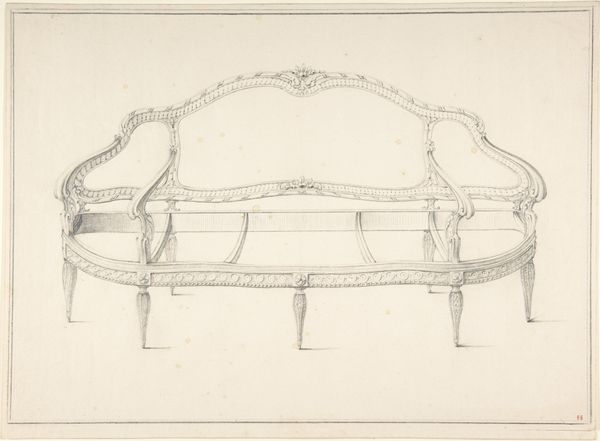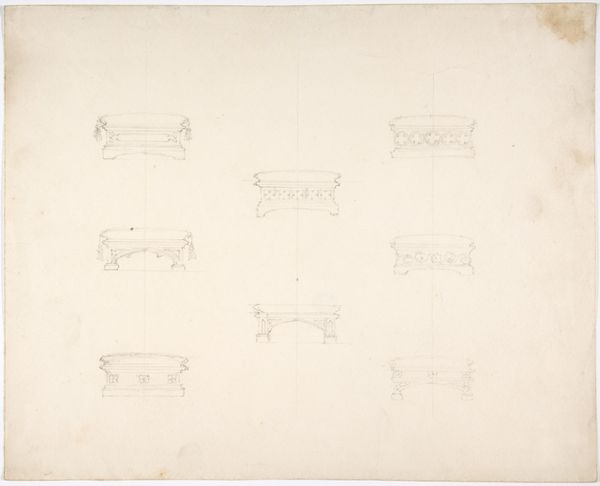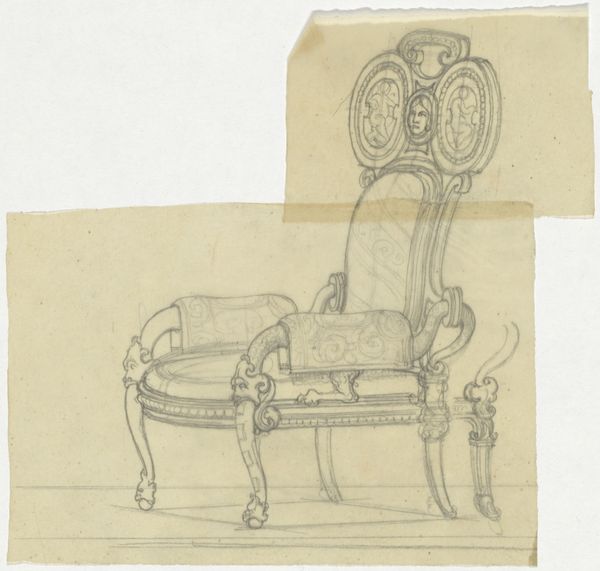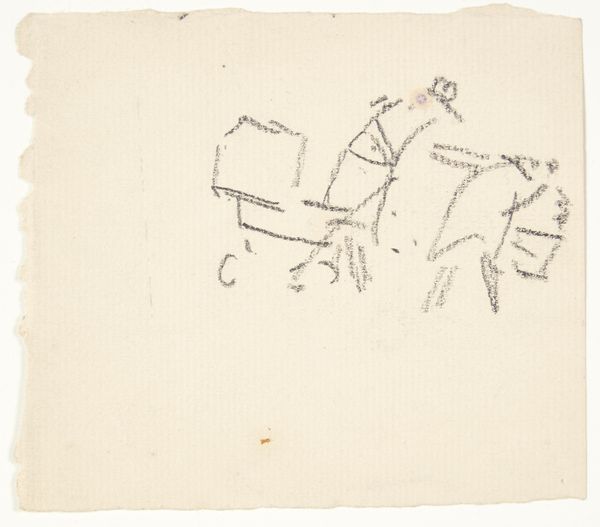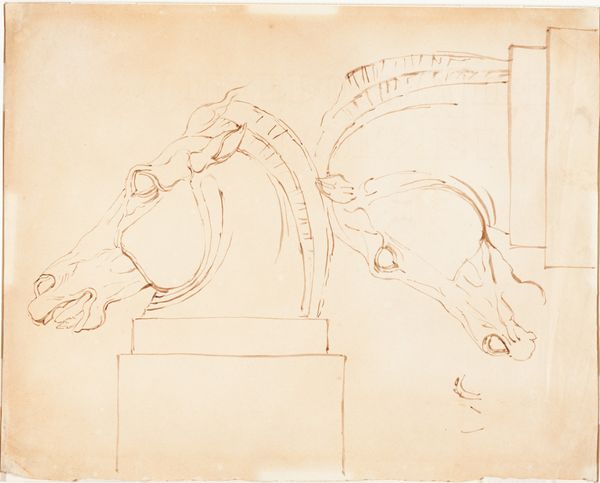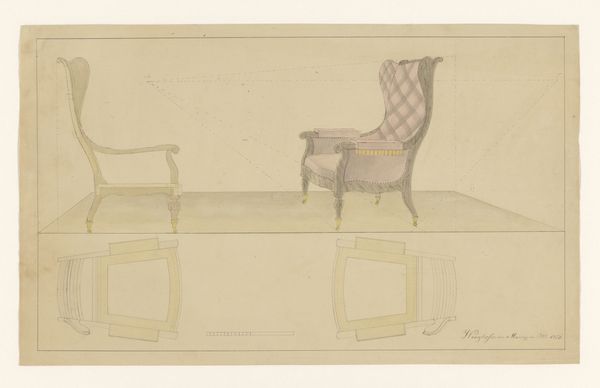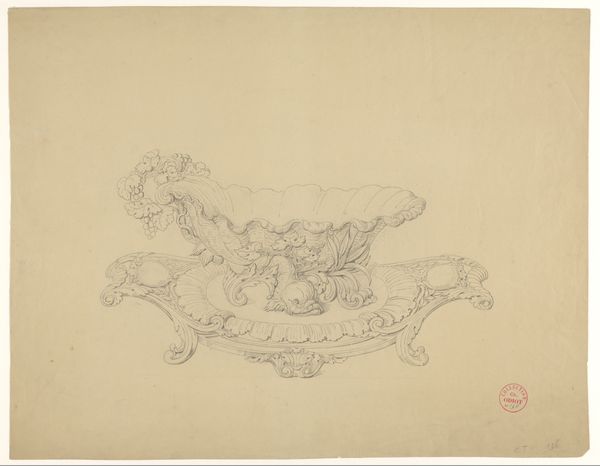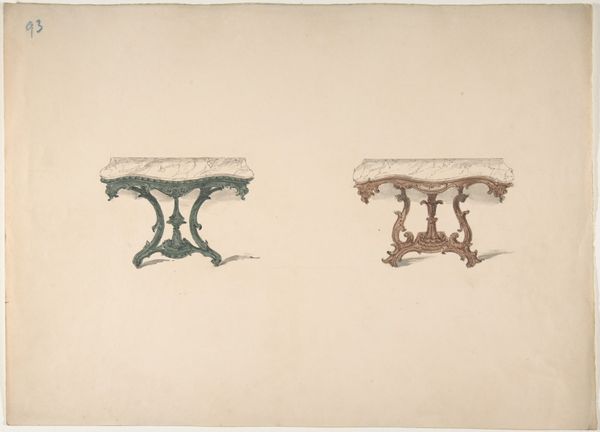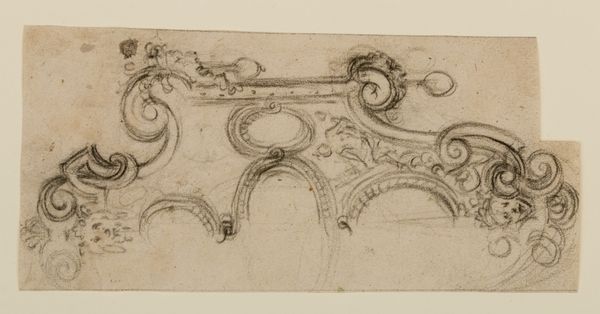
drawing, print
#
architectural sketch
#
drawing
#
toned paper
#
light pencil work
# print
#
pencil sketch
#
etching
#
personal sketchbook
#
ink drawing experimentation
#
pen-ink sketch
#
sketchbook drawing
#
watercolor
Dimensions: 7-5/16 x 9-9/16 in. (18.5 x 24.3 cm)
Copyright: Public Domain
Editor: We are looking at "Two Design Drawings for Day-Beds," dating back to sometime between 1700 and 1800, created by an anonymous artist. These are drawings, likely a print or etching. There’s an elegant quality to the sketches. What do you notice about how daybeds reflect the culture of that time? Curator: These drawings are quite interesting from a social history perspective. Daybeds in the 18th century weren't just furniture; they were potent symbols of leisure and status. These designs, likely circulated within elite circles, offered a template for aspiring homeowners. Notice how the flowing lines and ornate detailing suggest a departure from purely functional forms, aiming for art objects suitable for relaxation or display. What can we learn about art production and audience consumption, looking at this anonymous artist and the work's circulation? Editor: So the sketch itself becomes almost like propaganda for a lifestyle? It's interesting to think that even furniture design could be a political statement about class and privilege. Does the museum environment today give this piece a new role, then? Curator: Precisely. Museums themselves shape our understanding of what's valuable and worth preserving. By placing these sketches in a museum setting, we elevate what was once a practical design document to the status of art. The drawings now serve as historical artifacts, revealing the values and aesthetics of a bygone era while participating in our contemporary socio-political discourse. Also, the act of preserving anonymous art opens important conversations about historical narratives, audience demographics, accessibility, and community engagement, isn't that right? Editor: Absolutely! I never thought of furniture design as a form of cultural commentary before, but you’ve shown me a new way to appreciate these sketches. Curator: And hopefully a broader understanding of art's ever-evolving relationship with society.
Comments
No comments
Be the first to comment and join the conversation on the ultimate creative platform.
